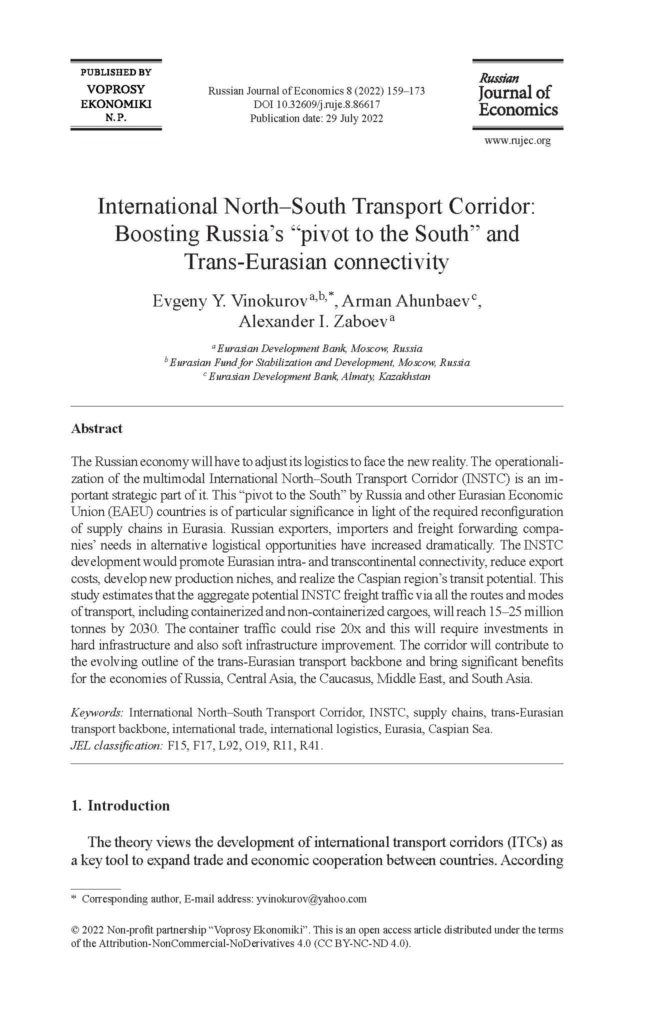International North–South Transport Corridor: Boosting Russia’s “pivot to the South” and Trans-Eurasian connectivity
Vinokurov E., Ahunbaev A., Zaboev A. (2022) International North–South Transport Corridor: Boosting Russia’s “pivot to the South” and Trans-Eurasian connectivity. Russian Journal of Economics 8(2): 159-173. https://doi.org/10.32609/j.ruje.8.86617
This paper aims to identify potential containerized and non-containerized freight traffic with a goods nomenclature and to quantify synergies arising from interlinking the International North–South Transport Corridor (INSTC) and the Eurasian east–west transport corridors. The additional aim is to introduce a new concept of the Eurasian transport backbone and to identify its benefits for the landlocked developing countries (LLDCs) in Eurasia. Section 2 reviews the studies and researches regarding the corridor and its economic consequences and assessments. Section 3 outlines methodology and data sources. Section 4 highlights the INSTC development, explores the Eurasian transport backbone, and assesses the potential of cargo flows through three INSTC’s routes. The existing bottlenecks in the transport and logistics infrastructure are presented in Section 5. Section 6 puts the INSTC into the framework of the evolving (and rapidly changing) trans-Eurasian connectivity. The final section concludes the study.
Abstract:
The Russian economy will have to adjust its logistics to face the new reality. The operationalization of the multimodal International North–South Transport Corridor (INSTC) is an important strategic part of it. This “pivot to the South” by Russia and other Eurasian Economic Union (EAEU) countries is of particular significance in light of the required reconfiguration of supply chains in Eurasia. Russian exporters, importers and freight forwarding companies’ needs in alternative logistical opportunities have increased dramatically. The INSTC development would promote Eurasian intra- and transcontinental connectivity, reduce export costs, develop new production niches, and realize the Caspian region’s transit potential. This study estimates that the aggregate potential INSTC freight traffic via all the routes and modes of transport, including containerized and non-containerized cargoes, will reach 15–25 million tonnes by 2030. The container traffic could rise 20x and this will require investments in hard infrastructure and also soft infrastructure improvement. The corridor will contribute to the evolving outline of the trans-Eurasian transport backbone and bring significant benefits for the economies of Russia, Central Asia, the Caucasus, Middle East, and South Asia.
